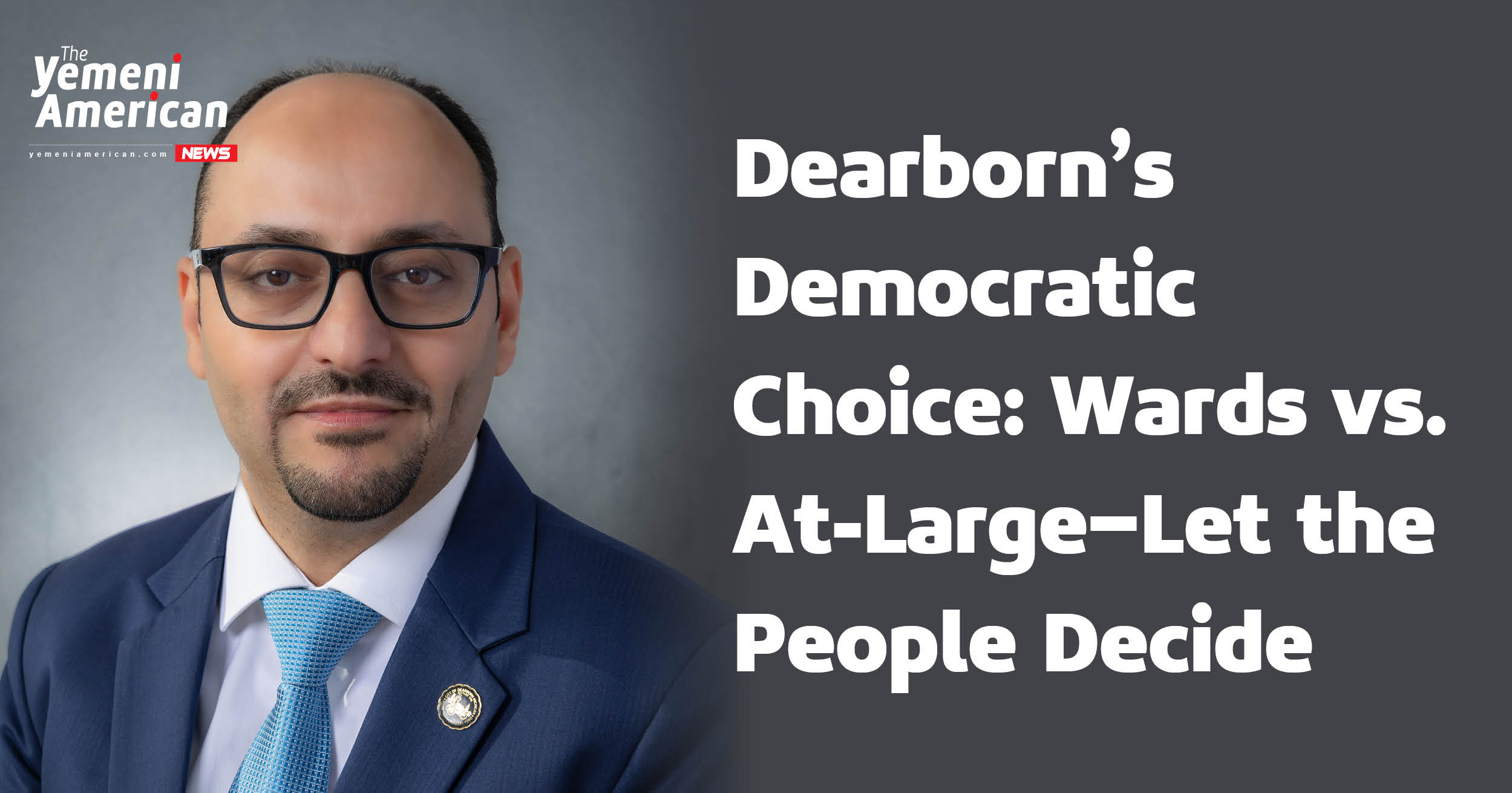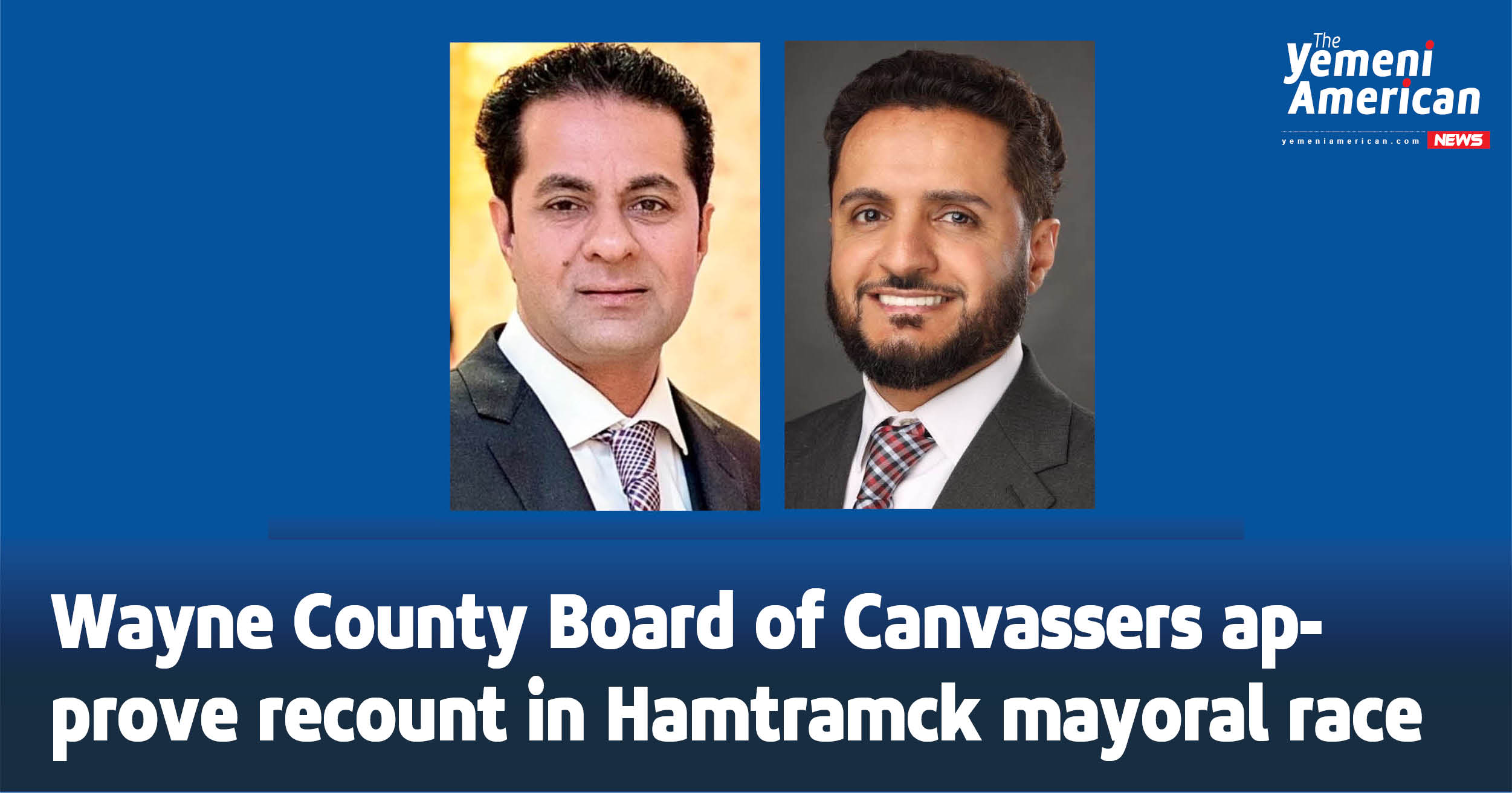By: Mohammed Rezq
The debate over shifting Dearborn’s City Council from an at-large system to a ward or hybrid model is fundamentally about where power and accountability should reside. While critics warn of division and administrative cost, proponents argue that only a district-based system can guarantee fair representation and a direct voice for every neighborhood, addressing the historic underrepresentation of certain communities under the current structure. This choice is not just procedural; it’s a decision about the future of Dearborn’s democratic fairness.
From Progress to Permanence: Institutionalizing Equity in Dearborn
Mayor Hammoud’s administration has markedly expanded investment in historically underserved neighborhoods, signaling a deep and deliberate commitment to equitable development and long-overdue justice for communities long ignored. This transformative vision–one that truly serves all of Dearborn should be embedded in the city’s institutional framework to ensure its permanence.A ward-based system offers a structural safeguard for this commitment. It guarantees that equitable service and representation are embedded in the very fabric of the City Charter.
Supporters of the ward system often highlight the chronic neglect of the South End as an example of the shortcomings of the current at-large model. The extraordinary progress now underway in that are–including revitalized parks, the creation of new green spaces, the establishment of an Industrial Greenbelt, and support for small businesses through expansion grants and a forthcoming façade improvement initiativ–represents millions in targeted investment. These achievements exceed the progress made in the previous three decades combined and are a direct result of Mayor Hammoud’s unwavering commitment to all corners of Dearborn.
This same dedication is evident in the administration’s strong stance on environmental justice. A renewed agreement with Pro-V Enterprises mandates up to $4 million in operational upgrades to reduce fugitive dust and enhance compliance–signaling a serious, enforceable commitment to public health. Coupled with the launch of a comprehensive, city-wide air quality monitoring network, this proactive oversight represents a new standard in environmental accountability.
These initiatives reflect the level of sustained focus required to undo decades of neglect. To protect this progress and ensure future administrations are held to the same standard, a ward system offers the structural continuity necessary to institutionalize equitable service and prevent a return to past patterns of disregard.
A System That Works for All
The argument that a ward system “institutionalizes division” fundamentally misunderstands the real issue. Division exists when entire neighborhoods feel politically ignored under the current at-large system. At-large elections favor well-funded, citywide campaigns, making it incredibly difficult for smaller or less affluent communities to secure a voice.
While a ward system may not permanently favor any single group, especially one that is approaching or becoming a majority in certain pockets, it ensures fair and consistent representation for all residents.
A ward system will be fair to those communities that were once majorities but are now becoming close to minorities, guaranteeing them a voice they might otherwise lose in citywide elections. It ensures that the specific concerns of neighborhoods– whether they relate to infrastructure, public safety, or the direct impact of pollution—are directly championed by an elected representative accountable only to that specific geographic area.
A ward system, if planned and implemented well, can be an institutional guardrail for democracy, ensuring that political power is dispersed and that the city government is truly accountable to the diverse tapestry of Dearborn’s residents.
A Hybrid System offers the best of both worlds. By combining district (ward) representation with at-large seats, we ensure every neighborhood has a guaranteed advocate at the table, protecting Dearborn’s diversity and addressing local needs directly. Concurrently, the at-large members maintain a clear mandate and responsibility to the entire city, promoting collective problem-solving and citywide cohesion. This structure institutionalizes balance rather than division.
Enhancing Governance and Equity
Focusing on local and district needs isn’t a weakness; it allows individual council members to spend more time deeply understanding the specific issues and challenges within their local community, ensuring local responsiveness while the city-wide perspective is maintained by the administration and the at-large council members.
Moreover, ward systems directly improve the equitable allocation of city resources. Ward councilmembers have stronger leverage and direct accountability over local budgets within their specific district. Ward councilmembers are uniquely positioned to leverage deep, localized knowledge to inform city policy. This structure ensures that the system succeeds in preventing the continued neglect of smaller, less politically influential neighborhoods and guarantees that city policy truly reflects all pressing community needs.
The Proven Benefit: Success in Other Cities
Across the United States, a quiet revolution in local democracy has been unfolding. In city after city, long-standing at-large election systems–where councilmembers are elected citywide–are being replaced by district or ward-based systems. The change is often driven by legal pressure, especially in states like California under the California Voting Rights Act (CVRA), and the goal is clear: to increase the representation of historically marginalized communities. But is it working?
Evidence from dozens of cities shows that in many cases, the shift to district elections has had a measurable and positive effect on political representation-especially for communities of color. According to data from organizations like PolicyLink and academic studies of CVRA enforcement, cities that switch to district-based elections typically see a 10–12% increase in the racial and ethnic diversity of their city councils. In cities with large Latino or Asian-American populations, the impact can be even more pronounced.
Take Santa Clara, California. In 2018, the city was found to be in violation of the CVRA for maintaining an at-large system that diluted Asian-American voting power. A court ordered the city to move to district elections. Within a year, Santa Clara elected its first Asian-American city councilmember, Raj Chahal, representing a district where Asian residents made up a plurality. Similar results have been seen in cities like Redwood City, Livermore, and Half Moon Bay, which saw surges in both candidate diversity and electoral outcomes favoring underrepresented communities after switching to districts.
In Springfield, Illinois, a federal court ruled in 1987 that the city’s at-large commission system had effectively excluded African-American residents from meaningful representation. The court mandated a transition to a ward-based aldermanic system. The very next election saw two Black aldermen win seats, and in the decades since, Springfield’s council has gradually become more racially and gender diverse.
Another successful example of a ward system is Virginia Beach, Virginia. A 2021 federal court ruling found that Virginia Beach’s previous at-large system illegally diluted the voting power of minority communities. This led to the court-imposed use of a 10-district, hybrid system for the 2022 election. The result was the most diverse City Council in Virginia Beach’s history. Furthermore, a 2023 University of Virginia study confirmed that under the new structure, residents felt their representatives were more diverse, responsive, and accountable compared to the previous system.
As more cities consider abandoning their at-large systems, the lessons from places like Santa Clara and Springfield are instructive: ward systems don’t just change who gets elected—they reshape who gets heard. Whether that leads to more inclusive or more fragmented governance depends not just on how the lines are drawn, but on what communities do once the districts are in place. Ultimately, sustained community participation remains the basis for the success of any democratic process.
Boosting Engagement and Lowering Campaign Costs
Under the current at-large model, residents often feel their single vote is diluted. Wards reverse this: a candidate only needs to win a few thousand votes in their specific district, making each resident’s vote demonstrably more powerful. This localized focus encourages more participation and a deeper sense of ownership, which increases civic engagement.
The ward system acts as a powerful check on the influence of money. A candidate running in a smaller ward only needs to connect with the voters in a manageable number of precincts, allowing for grassroots, door-to-door campaigning that is significantly cheaper and more personal. This change levels the playing field by Reducing Financial Barriers, making local government service accessible to more residents, including community activists and first-time candidates Which contributes to the integration of youth into public service.
Opponents cite Evan Mast’s study, “Warding Off Development: Local Control, Housing Supply, and NIMBYs,” which suggests ward elections reduce housing permits. While the study provides valuable data, its focused, technical scope is a key limitation that shouldn’t overshadow the democratic benefits of wards. The analysis is intentionally narrow, measuring only changes in housing permits and excluding other effects of electoral change. Crucially, the study doesn’t quantify the significant social and political benefits of ward systems, such as increased minority representation.
Democracy Comes with a Price Tag
ITo be clear, advocating for a ward system is not denying that it involves trade-offs and minor sacrifices. Yes, implementing a ward system carries upfront costs – redistricting, legal fees, public education. But the modest costs of creating wards are not wasteful; they’re investments in fairer representation and stronger community trust. Dearborn is not pioneering this effort. Many Michigan cities–including Lansing, Detroit, Flint, Ypsilanti, and Ann Arbor–already use ward-based or hybrid systems, demonstrating that this is a practical and proven democratic structure. Detroit, for example, transitioned after voters approved a 2009 referendum to move from an all at-large council to a system with seven single-member districts and two at-large seats, which went into effect in 2013.
While the risk of gerrymandering is real, it’s not a reason to abandon wards. It’s a reason to build the reform to guard against the risk: establish an independent or mixed commission, set clear criteria for drawing lines (equal population, respect for neighborhoods, minority representation), and mandate public hearings. Ultimately, democracy may cost something–but when done right, the payoff in fairness, trust, and actual local power is truly priceless.
The Final Word Belongs to Dearborn Voters
Unity is not weakened by fair representation–it is strengthened by it and imbued with deeper meaning. When every neighborhood has a voice and an accountable representative, that is the very essence of true democracy, not its contradiction. A ward-based electoral system is not a gamble; it is a proven democratic reform that restores balance, brings power closer to the people, and ensures that no voice is left unheard.
Dearborn,with its rich history and vibrant diversity, deserves a representative system that reflects all its residents, not one that reserves political participation for those with wealth or influence. Democracy does not thrive on fear or caution, but on courage–and real courage lies in trusting the people and empowering them to shape their collective future.
In the end, the decision to move from the current system to a ward-based or hybrid model should not be made behind closed doors or shaped by special interests. It rightfully belongs to Dearborn’s voters–through the ballot box. We urge all residents to study the facts, learn from the experience of other cities, and choose the path that guarantees fair representation, balanced governance, and a shared future worthy of every community in this city–whether that means maintaining the current system or embracing a new one.
Note: The views expressed in this article are the author’s own and do not represent the views or positions of their employer.








